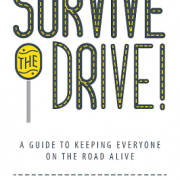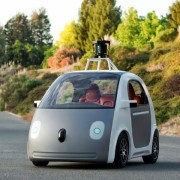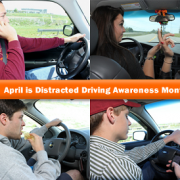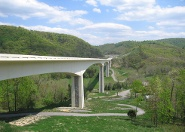Connected, Autonomous Vehicles On Display in Northern Virginia
Jennifer van der Kleut
Staff and elected officials from Fairfax County in northern Virginia were treated to an up-close look at connected and driverless car technology at a special event last week on May 3.
DriverlessTransportation.com and our sister company, eTrans Systems, which manufactures connected-vehicle software, took part in the event, which examined the logistics and benefits of advancing the technology and also offered test rides in prototype vehicles.
Representatives from Virginia Tech Transportation Institute (VTTI), Tesla Motors, eTrans Systems and the Virginia Department of Transportation (VDOT) brought vehicles with connected and semi-autonomous technology to demonstrate how they work and to show off some of the benefits.
eTrans Systems showed off some of its V2I technology (vehicle-to-infrastructure) on test rides in a large, closed-off parking lot at the Fairfax County Government Center. Through a tablet mounted on the dashboard, riders could see when the system warned the driver if he was going over the speed limit or when the road was about to curve, and informed him of how soon an approaching traffic signal was going to change or when a collision with another vehicle was possible.
Following the demonstration rides, Fairfax County elected officials convened a discussion panel, moderated by David Zipper from the D.C.-based startup incubator 1776, and featuring representatives from eTrans, VTTI, VDOT and the consulting firm RK&K.
John Estrada, founder of DriverlessTransportation.com and CEO of eTrans, began remarks by reminding everyone that some autonomous vehicles are already present in Fairfax County and many other spots around the globe.
“Elevators are autonomous vehicles,” he pointed out. “And anyone who has ever traveled in or out of Dulles Airport has ridden in an autonomous tram.”
Estrada said he thinks the key to slowly introducing the technology to the masses is by starting it much that way-by limiting it to smaller, controlled areas in which they can be the only mode of transportation. He offered the nearby shopping and business districts of Tysons Corner as an example, as well as a few busier spots in Reston such as Reston Town Center and up and down the Sunrise Valley corridor.
In addition to providing a valuable opportunity to perfect the technology in a smaller, controlled environment, autonomous vehicles could also help solve the widespread “last mile” problem of public transit in such areas. This refers to how some people shy away from mass transit like Metro, buses or the subway because it only gets them so far, and then they have no way to get the “last mile” to their needed destination.
Dwight Farmer of RK&K, who previously worked for decades as a planning commissioner in Hampton Roads, Virginia, continued the conversation by pointing out many benefits that municipalities like Fairfax County could enjoy with the advent of autonomous vehicles and V2I and V2V (vehicle-to-vehicle) communications.
For example, if safe spacing between vehicles could be reduced, the capacity on our highways could double, Farmer said. This refers to the idea that the distance between cars could be automated through technology so that cars could safely travel very close together without the danger of collision, and the constant start-and-stop that often accompanies gridlock traffic.
Farmer added, with automated safe spacing, cars could also safely increase their speeds by 20 percent, getting people to their destinations even faster and more smoothly.
And, with fewer crashes, those municipalities could save a great deal of money that is normally spent on crash response, which could then be rerouted for much-needed infrastructure improvements.
“I think we’re about to witness extraordinary times,” Farmer concluded.
Moderator Dave Zipper agreed.
“I think [connected and driverless vehicles] are going to bring about the most exciting change in mobility since the Model Ts were first rolled out in 1910,” he said.
Images by Jennifer van der Kleut for DriverlessTransportation.com





